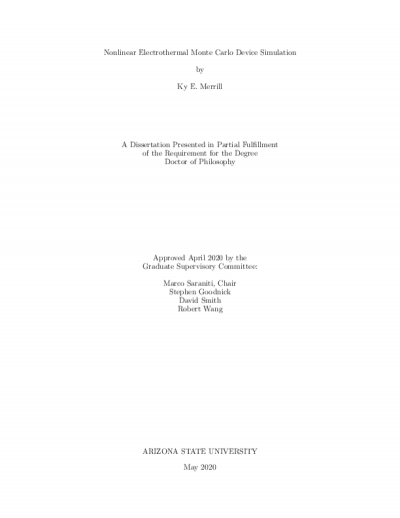Phase Change Materials for Thermal Management in Thermal Energy Storage Applications

Description
Thermal Energy Storage (TES) is of great significance for many engineering applications as it allows surplus thermal energy to be stored and reused later, bridging the gap between requirement and energy use. Phase change materials (PCMs) are latent heat-based TES which have the ability to store and release heat through phase transition processes over a relatively narrow temperature range. PCMs have a wide range of operating temperatures and therefore can be used in various applications such as stand-alone heat storage in a renewable energy system, thermal storage in buildings, water heating systems, etc. In this dissertation, various PCMs are incorporated and investigated numerically and experimentally with different applications namely a thermochemical metal hydride (MH) storage system and thermal storage in buildings. In the second chapter, a new design consisting of an MH reactor encircled by a cylindrical sandwich bed packed with PCM is proposed. The role of the PCM is to store the heat released by the MH reactor during the hydrogenation process and reuse it later in the subsequent dehydrogenation process. In such a system, the exothermic and endothermic processes of the MH reactor can be utilized effectively by enhancing the thermal exchange between the MH reactor and the PCM bed. Similarly, in the third chapter, a novel design that integrates the MH reactor with cascaded PCM beds is proposed. In this design, two different types of PCMs with different melting temperatures and enthalpies are arranged in series to improve the heat transfer rate and consequently shorten the time duration of the hydrogenation and dehydrogenation processes. The performance of the new designs (in chapters 2 and 3) is investigated numerically and compared with the conventional designs in the literature. The results indicate that the new designs can significantly enhance the time duration of MH reaction (up to 87%). In the fourth chapter, organic coconut oil PCM (co-oil PCM) is explored experimentally and numerically for the first time as a thermal management tool in building applications. The results show that co-oil PCM can be a promising solution to improve the indoor thermal environment in semi-arid regions.
Date Created
The date the item was original created (prior to any relationship with the ASU Digital Repositories.)
2020
Agent
- Author (aut): Alqahtani, Talal
- Thesis advisor (ths): Phelan, Patrick E
- Committee member: Shuaib, Abdelrahman
- Committee member: Mellouli, Sofiene
- Committee member: Wang, Robert
- Committee member: Mu, Bin
- Publisher (pbl): Arizona State University








